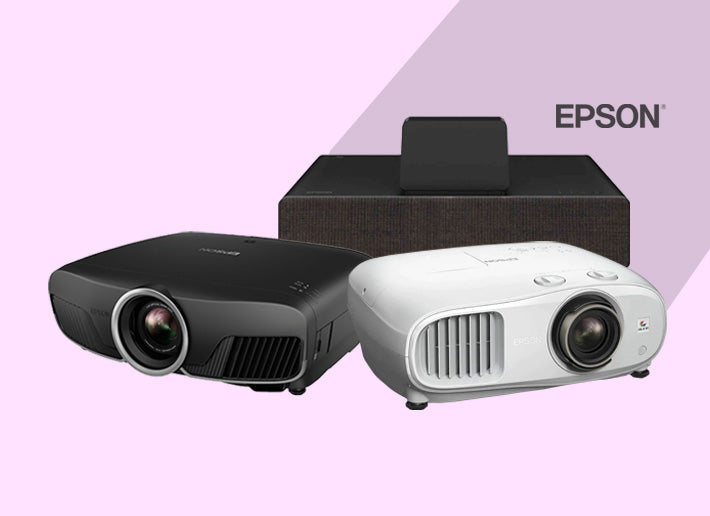We break down the key differences between traditional and networked home theaters, covering performance, installation, cost and lots more to help you make the right choice.
Home theater technology has evolved dramatically over the past two decades. Once limited to dedicated rooms filled with wired speakers, bulky AV receivers and physical media players, today’s home theaters can be fully networked, offering wireless multi-room streaming, advanced digital signal processing and cloud-based content access. But does the new era of network-based home theaters outperform the tried-and-true traditional setup? And which option suits your needs best?
In this article, we’ll explore the differences between traditional home theaters and network-based home theaters and compare them across various factors, including audio and video processing, scalability, connectivity, installation, performance, cost, reliability and future-proofing. Whether you’re building a new setup from scratch or considering an upgrade, understanding these distinctions will help you make an informed decision.
How Different are They?
A traditional home theater consists of wired components such as an AV receiver (AVR), multiple speakers, a dedicated media source (e.g., Blu-ray player) and a display device like a projector or OLED TV. The connections are primarily physical, ensuring direct signal transmission with minimal latency.
On the other hand, a network-based home theater relies on networked AV distribution, often using protocols like Dante, AES67, or AVB. This system enables audio and video signals to travel over Ethernet networks rather than direct HDMI or speaker wire connections. Content sources include streaming services, NAS drives and cloud-based platforms. Networking allows for easier expansion, remote control via apps and the ability to stream high-quality content from multiple sources without requiring physical media or extensive cabling.
The core difference is that while traditional systems prioritise direct, high-fidelity wired connections, network-based theatres focus on flexibility, scalability and wireless connectivity. Next, let’s look at how they handle AV duties and what expandability looks like.
Processing, Flexibility and Scalability
Traditional home theaters rely on dedicated AV receivers, which process both audio and video signals, distribute power to speakers and handle decoding for surround sound formats like Dolby Atmos and DTS:X. These systems are known for their low-latency, high-fidelity sound reproduction.
Network-based systems use advanced digital networking to distribute signals. Platforms like Dante allow for ultra-low latency audio transmission over a LAN, eliminating the need for speaker cables.
Traditional systems are typically static—once a wired speaker is installed, relocating it requires re-cabling. Scaling up the system (e.g., adding more speakers or zones) means running additional wires, which can be labour-intensive. In contrast, network-based home theaters shine in flexibility. Additional speakers or zones can be added with minimal effort, often requiring just an Ethernet cable or a wireless connection. Distributed audio allows users to sync multiple rooms without complex rewiring.
Connectivity and Media Sources
Traditional home theaters heavily rely on direct, hardwired connections and physical media sources. HDMI cables and optical audio connections ensure lossless transmission of high-definition video and audio. The content is typically played from Blu-ray discs, UHD players, cable boxes, or dedicated media servers that store locally downloaded or ripped content. These setups provide maximum fidelity but require meticulous cable management, often resulting in multiple remote controls for different devices.
Network-based systems emphasise digital media content and distribution. These setups are designed especially to utilise streaming services like Netflix, Apple TV, Disney+ and Amazon Prime Video, as well as NAS (Network-Attached Storage) drives that store personal media libraries accessible over the home network. Many modern receivers and smart TVs integrate built-in apps for these services, reducing the need for external media players. In addition, external services allow users to organise and access vast content libraries seamlessly from any device within the network. While this approach offers greater convenience, it depends on strong internet connectivity and streaming compression may affect quality compared to physical media.
Installation and Maintenance
Installing a traditional home theater can be labour-intensive, as it involves wiring multiple speakers, ensuring optimal cable management and configuring an AV receiver manually. Depending on the complexity of the setup, professional installation may be required to optimise speaker placement, acoustic treatment and calibration of video settings. Once installed, traditional systems generally require minimal maintenance aside from occasional firmware updates on AV components and potential cable replacements.
Network-based home theaters simplify installation significantly. Since many components connect via Ethernet or Wi-Fi, there is often less wiring involved. Wireless speakers, streaming devices and cloud-based content access further reduce physical connections. However, maintenance can be more involved due to software updates, network-related troubleshooting and router optimisations to prevent buffering, latency, or signal dropouts. A well-configured home network with high-speed internet and proper bandwidth management is critical to maintaining peak performance in a networked system.
Latency, Sync and Performance
Traditional wired home theaters have a distinct advantage in terms of latency and synchronisation. Since HDMI, optical and speaker wires offer direct signal transmission, audio-video synchronisation issues are rare. The processing power is handled by AV receivers, which optimise surround sound formats and video upscaling in real-time with minimal delay.
Network-based home theaters, particularly those utilising wireless connections, can introduce latency challenges. Audio and video signals travelling over a network require buffering and synchronisation mechanisms, which can lead to slight delays if not properly managed. Technologies like Dante and AVB help mitigate latency by prioritising AV signals over other network traffic, but performance issues can arise if the home network is congested. High-bandwidth networking equipment, such as gigabit routers and managed switches, can significantly improve performance in a network-based setup.
Cost Considerations
Traditional home theaters often involve a higher upfront cost due to the need for high-quality wired speakers, AV receivers and professional installation. However, they are a long-term investment, as they do not rely on rapidly changing network technology or software-based ecosystems. Once installed, these systems have relatively low maintenance costs and hardware upgrades (e.g., a new AV receiver or additional speakers) are gradual rather than mandatory.
Network-based home theaters can be more cost-effective initially, especially if the household already has a strong home network in place. Wireless speakers and streaming devices reduce the need for physical infrastructure, but expenses may arise in upgrading networking equipment to handle high-resolution streaming and multi-room synchronisation. Additionally, reliance on streaming services may lead to recurring subscription costs.
Reliability and Redundancy
Traditional home theaters rely on dedicated AV components like receivers, disc players and wired speaker setups. Their reliability comes from direct physical connections, ensuring stable performance without dependence on network infrastructure. However, redundancy is limited—if a critical component fails, the system may become inoperable until repaired or replaced.
Network-based home theaters, leveraging IP-based distribution, offer greater redundancy through decentralised operation. Content can be streamed from multiple sources and wireless setups reduce single points of failure. Advanced systems using Dante or AV-over-IP provide failover mechanisms, ensuring uninterrupted playback if one path encounters issues. However, reliability depends on network stability, bandwidth and latency. While proper configuration with redundant networking can enhance uptime, network-based systems are more susceptible to connectivity failures compared to traditional wired setups, which are inherently more stable.
| Criteria for Choosing | Traditional Home Theaters | Networked Home Theaters |
| Audio & Video Quality | High-fidelity audio, lossless video, minimal latency | High-quality streaming, multi-room distribution |
| Flexibility & Scalability | Fixed setup, optimised for dedicated rooms | Easily expandable, wireless speaker integration |
| Connectivity & Media Sources | Supports physical media (Blu-ray, UHD, gaming consoles) | Supports cloud streaming, NAS drives, IP-based sources |
| Installation & Maintenance | Stable once installed, minimal updates needed | Easier installation, remote software updates |
| Latency & Synchronisation | Direct wired connections ensure precise A/V sync | May experience network latency but can be optimised |
| Cost Considerations | Higher initial cost but long-term stability | Lower upfront costs but ongoing expenses (subscriptions, upgrades) |
| Reliability & Redundancy | Highly reliable due to direct cabling | Redundancy options available, dependent on network quality |
| Smart Integration & Automation | Limited smart integration, relies on universal remotes | Seamless integration with smart home ecosystems, voice control |
Also Read: Best Home Theater Systems - Things to Consider Before Buying
Choosing the Right Home Theater
Deciding between a traditional and a network-based home theater depends on your priorities and lifestyle. If you prioritise the highest possible audio and video quality with minimal latency and don’t mind the complexity of wired setups, a traditional home theater is the best option. It’s ideal for dedicated media rooms where performance takes precedence over flexibility.
On the other hand, if you value flexibility, multi-room integration and ease of use, a network-based home theater might be more suitable. These setups are great for smart homes where convenience and automation play a crucial role. If you plan to expand your system over time and want seamless wireless control, a network-based system is the future-proof choice.
Both traditional and network-based home theaters have their strengths and limitations. Your choice ultimately depends on your performance expectations, budget and desired level of integration with smart technology. By understanding the differences outlined in this article, you can confidently build a home theater system that best suits your needs.
Explore our premium range of home theater systems and contact us for a tailored solution. Our team of experts can help you get up and running in no time.









